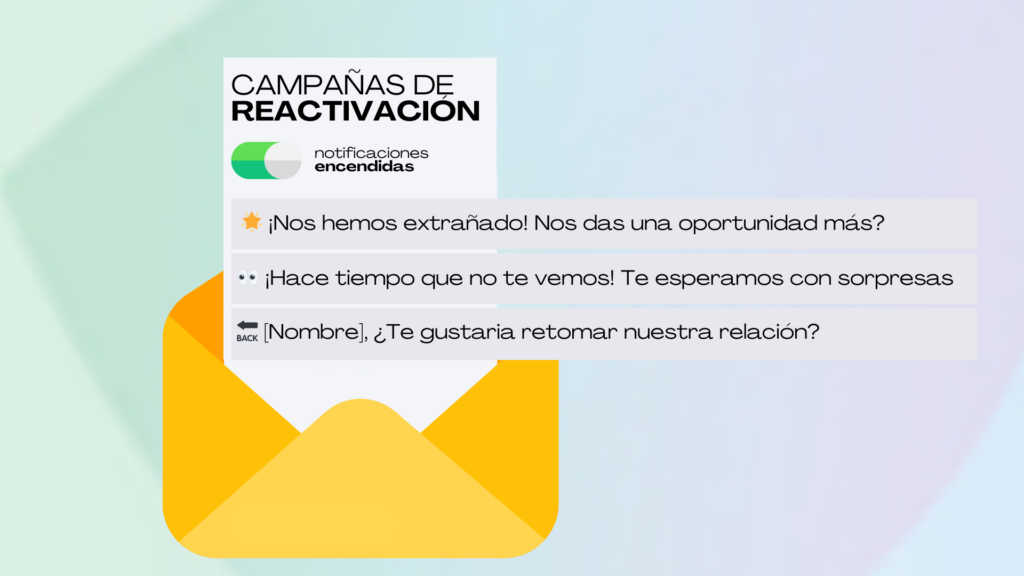Revive your subscriber list with Reactivation Campaigns.

During different posts in this blogWe have talked about the importance of segmenting our lists so that our mailings have the maximum possible impact on our subscribers.
While we are constantly thinking of strategies to generate a close link with our most active subscribers, it is also important to know that we are trying to recovering the relationship with our inactive subscribers is also important.
These users can be of great value to us because we know that at some point they have been interested in our brand and, therefore, have been a potential customer. In addition, it is interesting to study their experience with us to see where they left off and in this way observe if we are failing in any point repeatedly.

Thus, email reactivation campaigns play a key role in our database. Often, we tend to think that the only subscribers to whom we should pay attention and direct all our efforts are those who are active on a daily basis. Nothing could be further from the truth.
In this post, we are going to talk about very important aspects to take into account when carrying out a reactivation campaign, going through the different steps to achieve the desired objective: to recover the subscribers' activity.
What is an Email Reactivation Campaign?
To answer this question properly, we must first of all know what are the inactive users. These are basically those who have not carried out any type of action with our brand, that is to say, who have not interacted with our shipments for a period of time.
Knowing this, revival campaigns are a specialised tool to combat this adversity.. These are aimed at restoring relationships with all inactive subscribers on our mailing lists.
However, carrying out this type of campaign is not a simple action, as it requires time and a previous study of our list of subscribers.
What actions do we need to take to make them successful?
In order to run an excellent email reactivation campaign, the following steps must be taken:
1. Identify, classify and set objectives. This first step is critical. In order to be successful, we need to know exactly who our subscribers are. Therefore, we must investigate in our subscriber lists which are those who have not been interacting with our mailings for some time, and then group them together to be able to set up our reactivation campaigns. Finally, we will have to establish different objectives to be able to evaluate the performance of the campaigns once they are finished.
2. Create relevant content. This step is a set of actions that must be well worked out if you want to be successful. Look for originality, be creative and seek to connect with your subscribers so that they feel attracted and decide to interact with your brand.
The following aspects should be highlighted:
- – Subject line. In this blog we have spoken several times about the importance of these in our shipments and we know that a subject line can completely change the open rates of our mailings. In the case of reactivation campaigns, we recommend designing in a way that best suits the subscriber's situation so that subscribers are attracted to.
- – Sense of urgency. This technique has proven to be really useful in marketing. When a sense of urgency and scarcity is generated in the user, it is achieved that it ends up performing an action. Therefore, it uses limited quantities and specific dates to generate scarcity and urgency.
- – Personalise the message. Personalising messages is also important, as mentioned above, in reactivation campaigns. it is very important that users feel identified within a context that makes sense.. So tell him you miss him by name, or find other ways to get his attention by using as much personalisation as possible.
- – Functional CTAs. Use a design that serves to make interact with your brand againeither by entering your website, or by performing another action that interests you. By using a powerful CTA we can get our subscribers to perform the interaction we are interested in.
- – Brevity. We have to put ourselves in the position of our inactive subscriber to be successful. It is very important to understand that they probably once had an interest in our brand, and for whatever reason they no longer do. Therefore, making a very extensive or unattractive email design will only work against us. In short, being brief and straight to the point will help you a lot.
3. Timing of shipments. Knowing when to contact our subscribers is also important. There is no optimum time to send your reactivation email campaigns, as it will vary according to each brand's audience. The most important thing is to strike a balance between too little shipping and too much shipping.. If we contact them too little, we are unlikely to attract them, but if we send them too many mailings, they may feel overwhelmed and decide to unsubscribe.
4. Analyse results and implement improvements. This point is not much of a secret. Once the campaigns are launched, we have to analyse the results to see if they are working or not. Normally these types of campaigns do not usually have the best metrics, but they do serve to recover some of the many subscribers, and this is already really successful. So don't get frustrated about the metrics and try to implement improvements as far as possible after assessing the results of your previous reactivation campaigns.